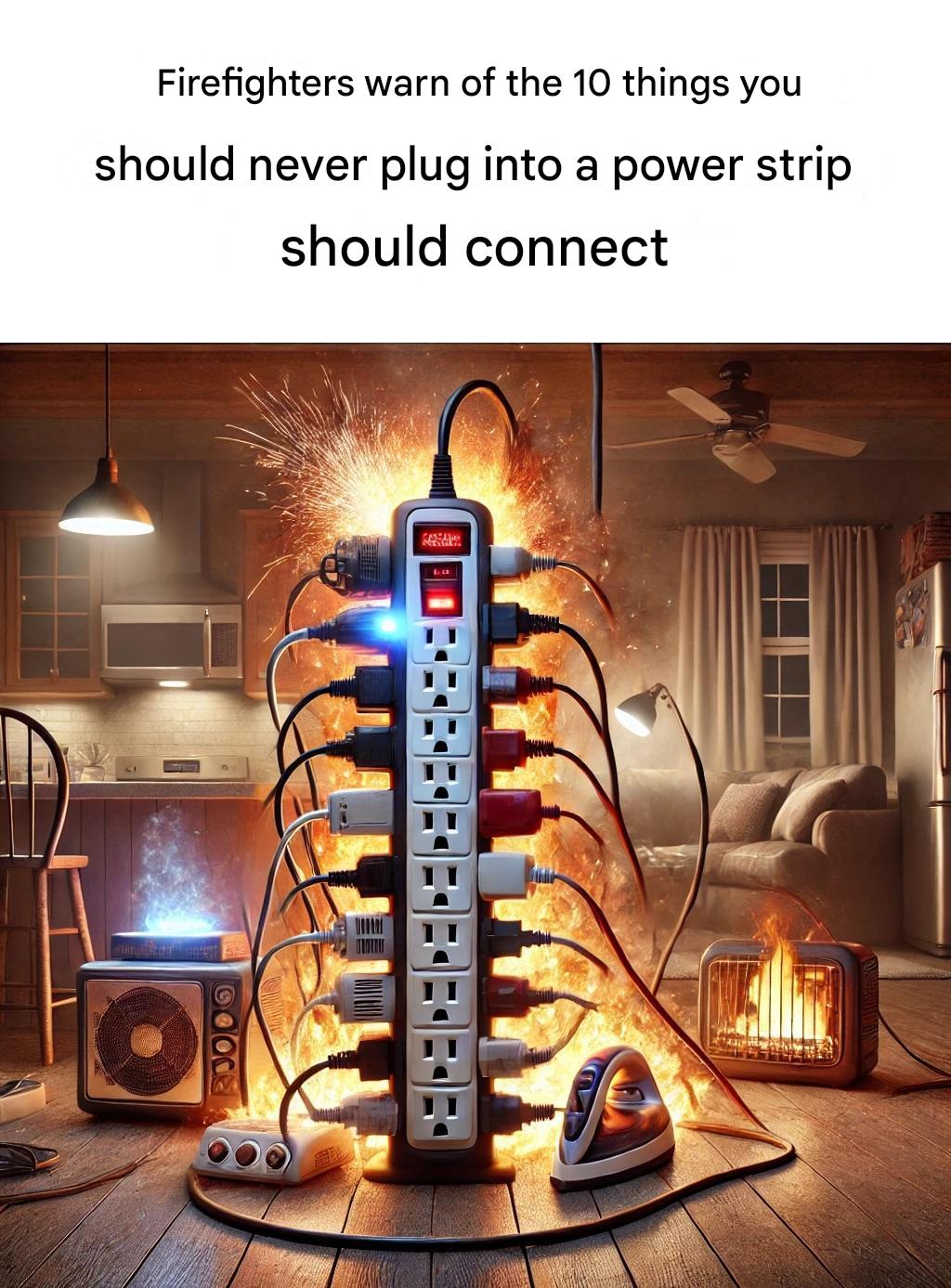Why power tools shouldn’t be plugged into power strips.
Power tools like drills and saws can draw a lot of current, especially when starting up. Plugging them into a power strip can cause overheating and potentially a power strip failure. For safety reasons, power tools should be used with their own wall outlet or a heavy-duty extension cord rated for the power requirements of the tool.
The problem with plugging in hair styling appliances:
Hair styling appliances such as hair dryers and straighteners draw a lot of power and can quickly overload a power strip. These appliances should be plugged directly into a wall outlet to prevent overheating and reduce the risk of fire.
The Dangers of Using Power Strips for Medical Devices
Medical devices such as CPAP machines and oxygen concentrators are critical to health and safety. Using a power strip for these devices can pose the risk of power outage or fire. It is important to plug medical devices directly into a wall outlet to ensure reliable operation.
The Dangers of Plugging in Overloaded Chargers
Many people use power strips to charge multiple devices simultaneously. However, overloading a power strip with chargers can lead to overheating and a potential fire hazard. It’s important to monitor the total load and ensure it doesn’t exceed the power strip’s capacity.
The Risks of Using Power Strips Outdoors
Power strips are generally not designed for outdoor use unless specifically designed for that purpose. Using a standard power strip outdoors exposes it to moisture and the elements, increasing the risk of electric shock and fire. Always use outdoor-rated power strips for all outdoor applications.
Conclusion: Using Power Strips Safely
Power strips are a convenient tool for managing multiple devices, but they must be used with caution. Understanding the limitations of power strips and following safety guidelines can help you avoid electrical hazards and ensure the safety of your home. Always be aware of the devices you plug into a power strip, and if in doubt, consult the manufacturer’s instructions or a professional electrician.
